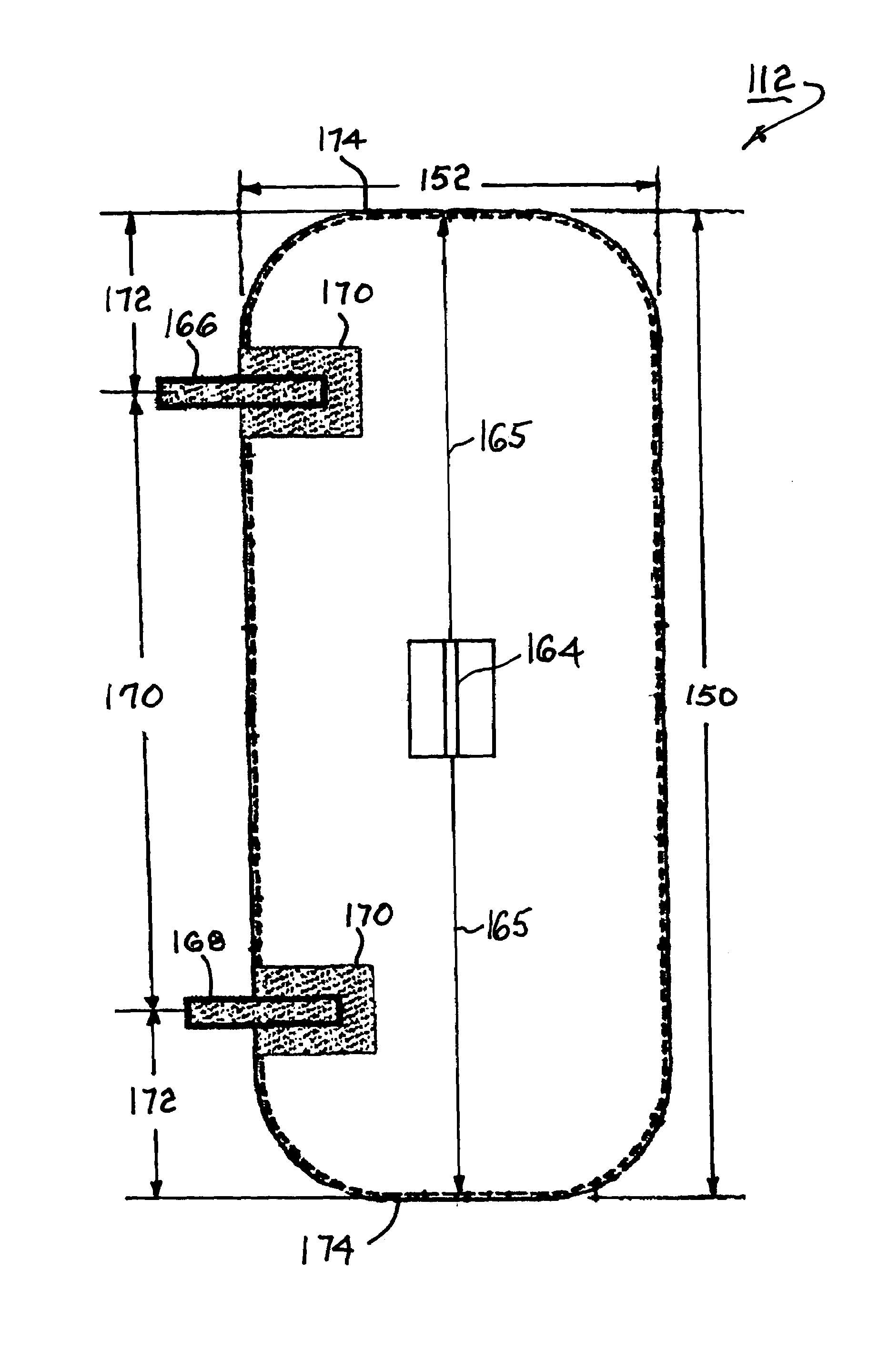Bulkhead door for a vessel
a bulkhead door and vessel technology, applied in the field of bulkhead doors, can solve the problems of high undesirable pattern, high cost, and inability to meet the needs of hull parts, so as to reduce the number and variety of spare doors, eliminate time-consuming and dirty fittings, and increase the life of hinges.
- Summary
- Abstract
- Description
- Claims
- Application Information
AI Technical Summary
Benefits of technology
Problems solved by technology
Method used
Image
Examples
Embodiment Construction
[0024]Referring to FIG. 1, a prior art watertight bulkhead door system 10 comprises a bulkhead door 12 provided with a handle 14, hinges 16, and hinge pins 17 mounted to a collar 18 attached to an exterior surface of a bulkhead 20 and surrounding a bulkhead opening 22. Prior art door 12 includes a pattern of stampings 23 to increase flexural rigidity and continuous peripheral gasket 24 disposed on a reverse side of door 12 for sealingly mating with a collar 18 extending away from the exterior bulkhead surface. System 10 is shown in door closed and locked position.
[0025]The peripheral surface of door 12 is provided with a plurality of strikers 26 tapered in a direction generally parallel with the sides of door 12. An equal number of dogs 28 are pivotably disposed, one for each striker, outboard of door 12 in collar 18. Dogs 28 are mounted on spindles 30 extending through collar 18 and bulkhead 20, the spindles being synchronously rotatable by an articulated mechanism (not visible in ...
PUM
 Login to View More
Login to View More Abstract
Description
Claims
Application Information
 Login to View More
Login to View More - R&D
- Intellectual Property
- Life Sciences
- Materials
- Tech Scout
- Unparalleled Data Quality
- Higher Quality Content
- 60% Fewer Hallucinations
Browse by: Latest US Patents, China's latest patents, Technical Efficacy Thesaurus, Application Domain, Technology Topic, Popular Technical Reports.
© 2025 PatSnap. All rights reserved.Legal|Privacy policy|Modern Slavery Act Transparency Statement|Sitemap|About US| Contact US: help@patsnap.com



